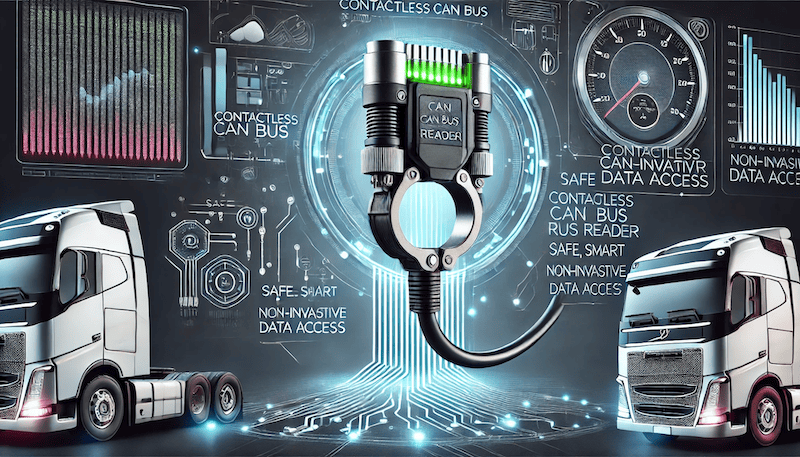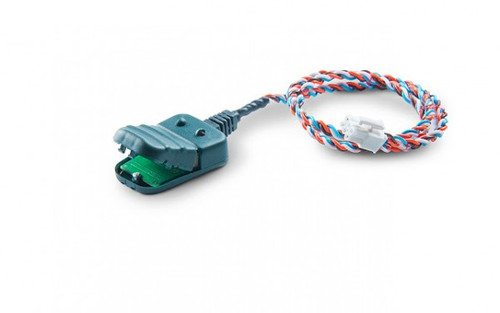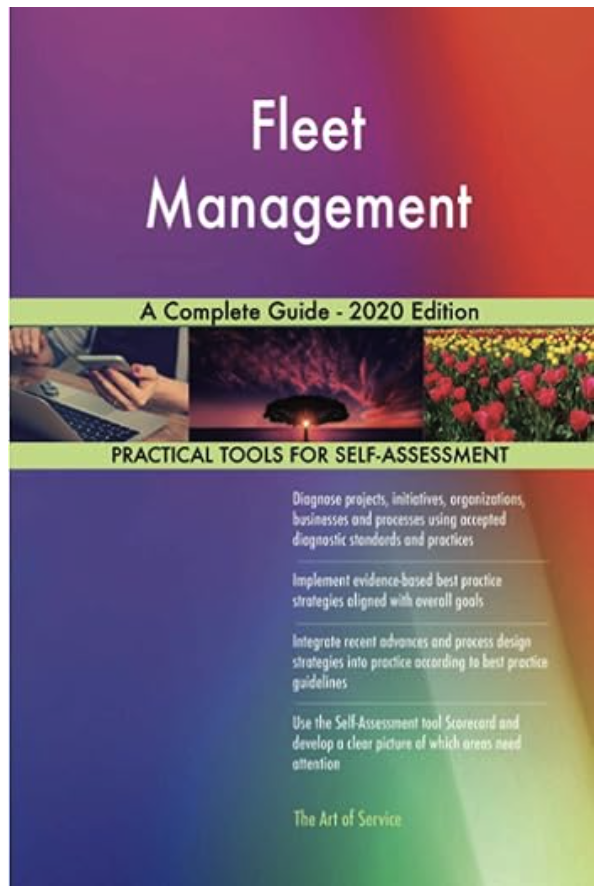Blog
Recent Posts
Understanding the CanCrocodile Contactless CAN Bus Reader: A Game-Changer for Vehicle Data Monitoring
Posted by on
 In the evolving world of vehicle diagnostics and telematics, acquiring reliable data from a vehicle's Controller Area Network (CAN) bus is essential. The CanCrocodile Contactless CAN Bus Reader, offered by Copperhill Technologies, represents a significant advancement in non-intrusive data acquisition technology. This device is designed to read CAN bus data without physically connecting to or altering the original wiring, offering a safe, efficient, and innovative solution for both vehicle manufacturers and telematics professionals.
In the evolving world of vehicle diagnostics and telematics, acquiring reliable data from a vehicle's Controller Area Network (CAN) bus is essential. The CanCrocodile Contactless CAN Bus Reader, offered by Copperhill Technologies, represents a significant advancement in non-intrusive data acquisition technology. This device is designed to read CAN bus data without physically connecting to or altering the original wiring, offering a safe, efficient, and innovative solution for both vehicle manufacturers and telematics professionals.
What is the CAN Bus System?
Before delving into the features and benefits of the CanCrocodile, it’s important to understand the role of the CAN bus in modern vehicles. The Controller Area Network (CAN) is a robust vehicle bus standard that allows microcontrollers and devices to communicate with each other without a host computer. It is widely used in automotive and industrial applications to enable real-time communication between various Electronic Control Units (ECUs) such as the engine, transmission, brakes, and dashboard systems.
Monitoring the CAN bus is crucial for diagnostic, fleet management, insurance telematics, and vehicle performance analysis. However, direct connection methods can raise safety, warranty, and complexity concerns—particularly when dealing with factory-sealed OEM systems.
The CanCrocodile's Key Features
 The CanCrocodile Contactless CAN Bus Reader addresses the challenges of traditional CAN data acquisition through a contactless design. Here are its core features:
The CanCrocodile Contactless CAN Bus Reader addresses the challenges of traditional CAN data acquisition through a contactless design. Here are its core features:
-
Contactless Data Reading: The CanCrocodile reads CAN bus signals without physically connecting to the CAN wires. Instead, it clamps onto the insulation of the existing wiring, using inductive technology to interpret the electromagnetic pulses generated by CAN communication.
-
Non-Invasive Installation: This method avoids cutting, stripping, or soldering wires. As a result, it preserves the integrity of the vehicle’s wiring and avoids voiding manufacturer warranties.
-
High Reliability and Safety: With no electrical connection to the CAN bus, the CanCrocodile eliminates the risk of signal interference, short circuits, or unintentional damage to the network.
-
Compatibility and Performance: It supports standard CAN 2.0A and 2.0B protocols and offers an output signal that can be fed into a wide range of telematics and diagnostic systems. This makes it compatible with most commercial and industrial vehicles.
-
Compact and Robust Design: Built for harsh environments, the CanCrocodile is encased in a durable housing suitable for automotive and industrial use. Its compact form factor allows for installation in tight engine compartments or dashboards.
Use Cases and Applications
The CanCrocodile is particularly useful in scenarios where traditional wiring access is either undesirable or impractical. Some of its most common applications include:
-
Fleet Management: Enables real-time vehicle data monitoring (e.g., speed, RPM, fuel level, fault codes) without modifying OEM systems.
-
Insurance Telematics: Provides driving behavior data without interfering with vehicle functions.
-
Public Transportation: Helps transit authorities monitor system health and driver compliance.
-
Agricultural and Industrial Vehicles: Facilitates data collection from heavy machinery and specialized vehicles where accessibility and warranty protection are concerns.
Advantages Over Traditional CAN Readers
Conventional CAN bus readers require direct electrical connection to the bus, which can be risky and time-consuming. Compared to these devices, the CanCrocodile offers several critical advantages:
-
No Electrical Contact: Reduces risk of disrupting sensitive vehicle systems.
-
Quick Installation: Saves time and lowers labor costs.
-
Preserves OEM Warranty: Ideal for leased fleets or vehicles under warranty.
-
Discreet Integration: Perfect for covert tracking and monitoring in security-sensitive applications.
Technical Considerations
While the CanCrocodile is a powerful tool, it does require proper alignment on the CAN wiring for optimal performance. Users must ensure the sensor is installed correctly according to manufacturer guidelines. Additionally, because it is a passive, contactless reader, signal strength and quality may vary slightly compared to direct connections, especially on shielded or twisted pair cables.
Conclusion
The CanCrocodile Contactless CAN Bus Reader is a testament to the innovation in vehicle telematics and diagnostic tools. Its non-intrusive design, ease of installation, and robust functionality make it a standout choice for fleet operators, telematics providers, and anyone needing access to CAN data without the complications of direct wiring. As vehicle systems become more integrated and complex, tools like the CanCrocodile will become essential in maintaining efficiency, safety, and compliance across a wide range of automotive applications.
 Unlock the Full Potential of Your Fleet Management Strategy
Unlock the Full Potential of Your Fleet Management Strategy
What are the asset management goals for your railcar fleet? Are your policies and procedures fully aligned with statutory and regulatory requirements? How effectively does your system verify the authenticity of products? Do you need a Fleet Management Information System (FMIS) to improve efficiency and compliance? What protocols are in place when an accident occurs?
This exclusive Fleet Management Self-Assessment is your go-to resource for mastering the complexities of fleet operations. Designed to make you a standout in the Fleet Management domain, it provides critical insights and frameworks to ensure you're prepared for any challenge.
Key Questions Addressed:
-
How can you reduce the effort needed to solve Fleet Management problems?
-
What steps can you take to ensure every task and outcome is accounted for in your action plans?
-
How can you save time while evaluating strategic and tactical options?
-
What’s the fastest way to deliver customized, actionable Fleet Management advice?
There’s no better guide through these essential questions than best-selling author Gerard Blokdyk. Renowned for his structured and practical approach, Blokdyk ensures every core aspect of Fleet Management is covered—from strategy and compliance to execution and results.
Grounded in successful projects and proven methodologies, this self-assessment tool provides you with:
-
Extensive evaluation criteria developed by experienced fleet practitioners
-
A streamlined process to identify gaps, opportunities, and actionable insights
-
A clear path to achieving professional, cost-effective, and results-driven outcomes
Whether you’re managing a railcar fleet or a diversified vehicle operation, this guide empowers you to optimize every element of your fleet management system with clarity and confidence. More information...
 Loading... Please wait...
Loading... Please wait...
